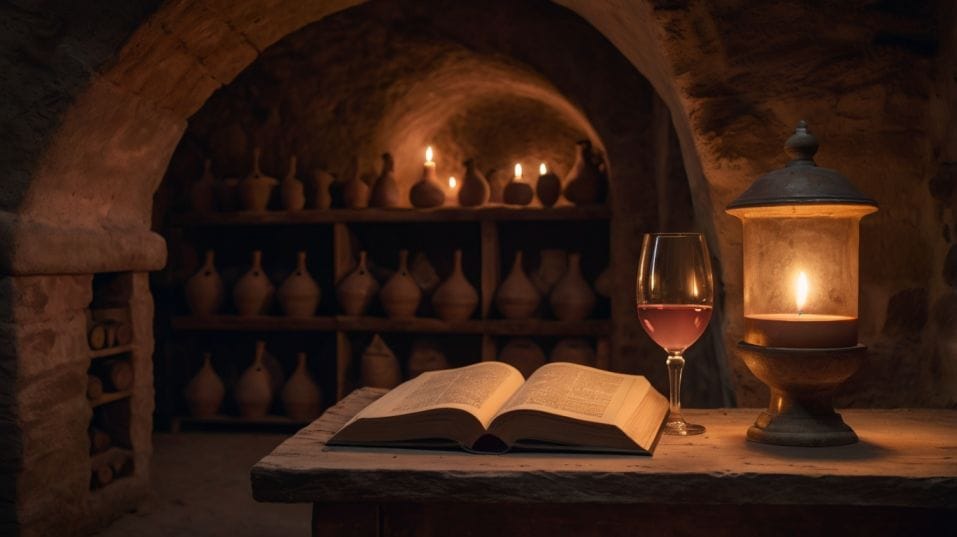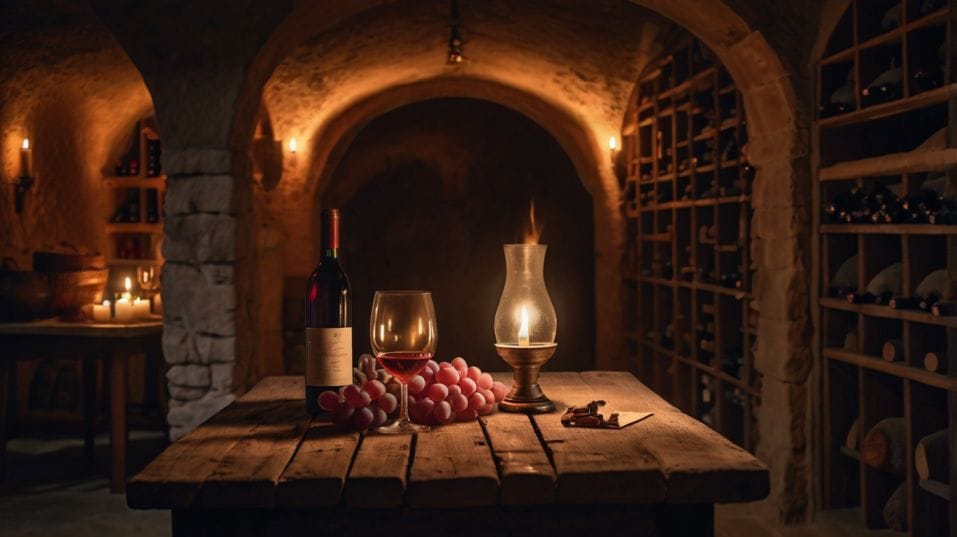A Brief History of Rosé (It’s Older Than You Think)
Discover why rosé isn’t a trend but the world’s oldest wine style—perfect for curious drinkers eager to taste with confidence and depth.

What if the pink wine you sip on patios is actually the oldest style in the world? Rosé isn’t trendy—it’s ancient.
Long before collectors obsessed over big reds, early winemakers were making pale, copper-hued wines that looked a lot like today’s rosé.
Knowing that changes how you taste. When made with intention, rosé reveals more than freshness—it speaks of history, craft, and place. It’s not a compromise. It’s where wine began.
Wine’s Earliest Days Were Rosé-Tinted
Let’s go back to the very beginning. The earliest known wine production dates to around 6,000 BCE in the Caucasus region, in what is now Georgia.
These early wines were made by fermenting grapes in underground clay vessels called qvevri, using whole clusters—stems, skins, seeds, and all.
The resulting wines likely had a pale red or coppery hue, more similar to today’s darker rosés or light reds than the deep, extracted reds we now associate with power and age.
Why? Because there was no advanced technology to separate juice from skins quickly, and no barrels to lend tannic structure.
Extended maceration—the skin contact that deepens color and adds grip—was either accidental or culturally avoided. In fact, for much of ancient history, darker wines were viewed as crude. Lighter wines signaled refinement and discipline.
Egyptians, Greeks, and later the Romans continued this preference. They often diluted darker wines with water and prized paler wines for everyday consumption.
Even among the wealthy, wines with lighter hues were associated with clarity, balance, and “civilized” drinking. In other words, pink wine wasn’t just acceptable—it was the standard.
So when you drink rosé, you’re not drinking a trend. You’re tasting the origin of wine as we know it.

Rosé in the Middle Ages: Monks, Merchants, and Method
The refinement of rosé continued in the Middle Ages, particularly in southern France, where monastic orders—especially the Cistercians—developed deliberate winemaking techniques that emphasized purity and freshness over strength.
The monks of Provence, in particular, played a major role in standardizing lighter wine production. They learned to press red grapes gently and briefly, minimizing the time juice spent on skins.
This technique preserved delicacy while still capturing some color and flavor. Over centuries, this style became distinct enough to form its own regional identity.
Even today, the heart of the world’s most recognized rosé comes from Provence, where the principles remain unchanged: early harvests for bright acid, short maceration for pale color, and neutral aging to let varietal character shine.
Importantly, rosé in this period wasn’t just a local preference—it was a luxury export.
As trade routes developed, pink wines from southern France were shipped across Europe and even into England, where they were considered fashionable long before Champagne took over the spotlight.
Modern Misunderstandings and the Mass Market Turn
Fast forward to the 20th century, and rosé takes a different turn—especially in the United States.
In the 1970s and '80s, the term “rosé” became associated with off-dry or semi-sweet wines like White Zinfandel. These wines weren’t bad by definition, but they were mass-produced, low in complexity, and sugary by design.
This phase of rosé’s history created a lasting misconception: that pink wine is light, unserious, and designed for people who “don’t really like wine.” In reality, these bottles had very little in common with traditional rosé-making techniques.
What matters today is recognizing the difference between style and shortcut. Good rosé—dry, balanced, and thoughtfully made—isn't a hybrid or a fallback. It’s its own craft.
How Serious Rosé Is Made (And Why It Matters)
There are three main ways to make rosé, but only one is traditionally considered the gold standard.
- Direct pressing: Red grapes are pressed as if making white wine. The juice picks up just enough pigment from the skins during this quick press to turn pale pink. This method produces lean, mineral-driven rosé with high acid and crisp fruit.
- Short maceration: Grapes are crushed and allowed to soak briefly (usually a few hours to a day) before pressing. This technique adds body, depth, and sometimes a gentle grip—useful for richer, food-oriented rosés.
- Saignée (bleeding): A portion of juice is "bled off" from a red wine fermentation to concentrate the red. The pink juice is then fermented separately. While saignée rosé can be serious and flavorful, it's often a byproduct, not the winemaker’s focus.
- Blending red and white: Generally discouraged in still wines (and banned in the EU, except for rosé Champagne), this method produces simple, commercial rosé. Skip it unless you're drinking bubbles.
When you're tasting seriously, these techniques matter. Direct press gives you clarity. Short maceration teaches you how tannin and acid interact.
Saignée reveals the red-wine roots of rosé grapes. And understanding how rosé is made helps you predict what’s in the glass—even before your first sip.
A Global Category With Local Character
Provence may have defined modern rosé, but it’s far from the only benchmark. Around the world, winemakers are now approaching rosé with the same intentionality they bring to red and white wines. That’s reshaping the category.
- In Spain, rosado made from garnacha or tempranillo brings spice, weight, and a savory finish. Look to Navarra for classic versions.
- In Italy, Chiaretto and Cerasuolo d’Abruzzo are complex, structured rosés that age surprisingly well.
- Austria and Germany make ultra-light, herbaceous rosés from zweigelt or pinot noir—ideal for tasting subtle site variation.
- In the U.S., serious rosé is emerging from cool-climate regions like Oregon, where pinot-based bottlings are lean, earthy, and age-worthy.
This global diversity makes rosé an exceptional way to explore terroir. Unlike many red wines, which are structured to hide or withstand age, rosé speaks clearly and immediately. That’s not a flaw—it’s a feature.
How to Taste Rosé Like It Matters
Tasting rosé with care changes everything. Don’t just sip—observe. Look at the color: is it onion skin pale, coral, or deep pink? That tells you about grape variety, extraction, and style.
On the nose, expect more than fruit. A good rosé shows minerality, florals, herbs, and even a bit of spice or salinity.
In the mouth, notice the acid—does it hit quickly or stretch long? Is the texture chalky, oily, or tight? Great rosé plays with tension, not sweetness.
Try tasting two styles side by side: one made from grenache and one from pinot noir. You’ll notice differences in weight, fruit profile, and acidity. That kind of comparison trains your palate faster than any book.
And remember—chilled is fine, but too cold and you’ll lose nuance. Let it warm slightly in the glass. The transformation is often subtle but striking.
Final Thoughts: Rosé as a Tasting Tool and Cultural Key
Rosé isn’t just easy to drink. It’s easy to underestimate. That’s what makes it such a valuable tool. When you learn to take rosé seriously, you start noticing more in every wine—acidity, extraction, balance, and varietal character.
So don’t just wait for summer. Don’t reach for the trendiest label. Instead, go deeper.
Try a structured rosé from Bandol, a savory one from Abruzzo, or a whisper-light expression from the Alps. Pay attention to how it’s made, where it’s from, and what it’s trying to express.
Taste with purpose. Pair more boldly. And next time you open a bottle of rosé, don’t just think pink—think origin, technique, and intention.
Today, choose a rosé you’ve never heard of. Pour it in a real glass. Taste it twice. Let it shift your perspective. That’s how real wine education begins.




